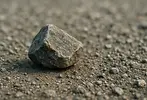Advanced Contouring University
Lesson: Retaining Wall Foundations
The foundation is the base on which a retaining wall stands, and it plays a critical role in the overall stability and durability of the structure. It is typically constructed below ground level and made of compacted gravel, crushed angular stone, or concrete. A strong foundation ensures that the wall remains upright and can handle the lateral earth pressure behind it.
The foundation works by distributing the load of the wall and the retained soil evenly across a wide area, reducing the chances of settlement or shifting. The depth and material of the foundation depend on factors such as wall height, soil type, and climate. In areas with freezing temperatures, the foundation must be deep enough to extend below the frost line to prevent frost heave.
A well-designed foundation prevents structural failure and prolongs the life of the wall. Without it, the wall may tilt, crack, or collapse due to soil movement or water erosion. A poor foundation is one of the leading causes of retaining wall failure.
Additionally, the foundation must be level and compacted to avoid uneven stress points along the wall. Builders often use a foundation made of crushed angular stone to help distribute loads uniformly. This pad also aids drainage, helping to prevent water from pooling beneath the wall.
In conclusion, the foundation is the backbone of a retaining wall. It provides strength, support, and longevity. Investing time and resources in building a proper foundation is essential for the safety and effectiveness of any retaining wall.

Key Terms
Frost Line
In construction, the frost line—also known as the freezing depth—is the maximum depth in the ground where soil is expected to freeze during the coldest months of the year. This depth varies by geographic location and climate, becoming deeper in colder regions. Understanding the frost line is crucial for building foundations, as placing footings below this level helps prevent frost heave, which occurs when moisture in the soil freezes and expands, potentially damaging structures. Properly accounting for the frost line ensures stability and longevity in construction projects.
Angular Stone
Angular stone, also known as crushed stone, consists of irregularly shaped pieces with sharp edges created through mechanical crushing. Unlike naturally rounded stones, which have smooth surfaces, angular stones interlock tightly when compacted, creating a stable and dense structure. This interlocking ability enhances load-bearing capacity and resistance to shifting, making angular stone ideal for construction applications such as road bases, drainage systems, and foundations. Its improved stability over non-angular stone helps prevent movement and settling over time, contributing to long-term structural integrity.







